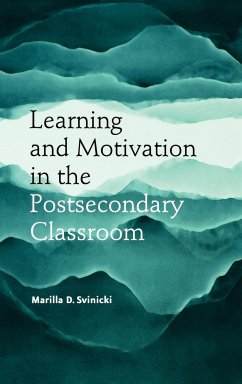While there is much available research and theory about learning and motivation, until now there has been no resource that translates esoteric findings into everyday language and examples that can be readily applied in college classrooms. This book brings the findings and theories of educational psychology to classroom faculty, helping them to adopt a scholarly approach to understanding their students' learning problems. Nine clearly written chapters demonstrate how learning theories can be successfully adapted to the classroom, and a useful appendix succinctly outlines the theories: cognitive, concept learning, social learning, constructivism, and motivational. * Chapter 1 presents an overview and purposes of learning and motivation theories for postsecondary settings, and discusses the value of being a reflective practitioner and grounding instructional decisions in research and theory about learning. * Chapter 2 examines the findings from the cognitive theory of learning and how instruction can be developed to help students master basic information. * Chapter 3 discusses teaching for understanding. To be able to really use information they are learning, students have to understand it at more than a surface level. * Chapter 4 explores social learning theory to introduce ways of helping students master new skills. * Chapter 5 examines what is known about transfer and how to promote it. * Chapter 6 discusses self-regulated learning and presents strategies for students to master in order to become independent learners. * Chapter 7 introduces some of the wide variety of theories that have been proposed as explanations of learner motivation and synthesizes them into a set of practical strategies for instructors to follow. * Chapter 8 discusses some practical differences in learners that can inform instructional design more meaningfully. * Chapter 9 illustrates how the theories can be combined into an instructional design process that is truly based on solid research.
Hinweis: Dieser Artikel kann nur an eine deutsche Lieferadresse ausgeliefert werden.
Hinweis: Dieser Artikel kann nur an eine deutsche Lieferadresse ausgeliefert werden.








